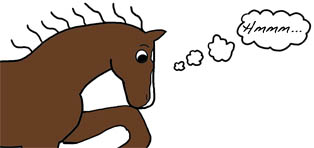ELCR.org - Full Article
Due to the urbanization of America, the general population has lost its contact
with and innate understanding of most animals, including livestock. The horse, in
particular, is a unique animal. Because it is large and seldom encountered,
people assume that it is no different than other species of large animals. This
paper is meant to help people understand horses and their interactions with the
environment when they encounter equines on trails.
Every trail user potentially causes some impact to the environment by their use.
For lightweight low-impact users, the effects are usually minimal. Scientific
studies indicate that the horse may be more benign to wildlife than hikers, nature
studiers and photographers. There are no studies that significantly implicate trail
use by horses with spreading weeds. Natural erosive forces are likely to be the
major alteration factors in trail erosion. Horses on trails are not detrimental to
water quality according to the latest studies by NAHMS, University of Colorado
and UC Davis-Tulare.
Equestrian Use of Trails is “Passive” Recreation
Every trail user potentially causes some impact to the environment by his/her
use. Compared to motorized usage, hikers, bikers and horses have been
variously described as passive, light-weight, and/or low-impact trail users. The
effects of passive use on trails are usually minimal. In virtually every mixed use
trail reference within the State of California and the nation, the horse has been
defined as a passive, low impact or light weight user, even in the most sensitive
environments: Natural Preserves...
Read more here:
http://www.elcr.org/resources/EnvironAspectsofHorsesonTrails.pdf

No comments:
Post a Comment